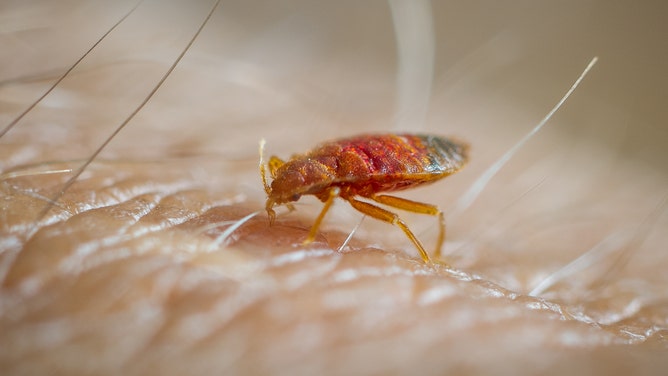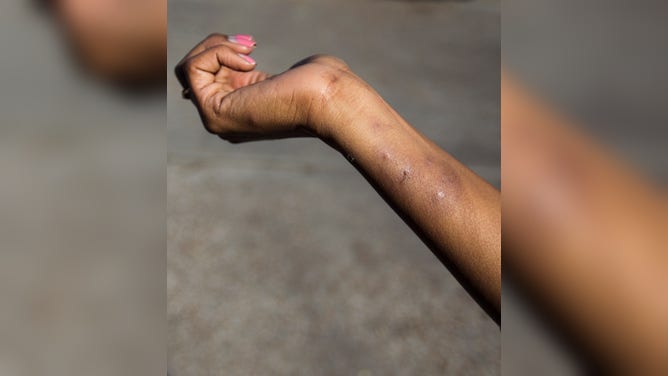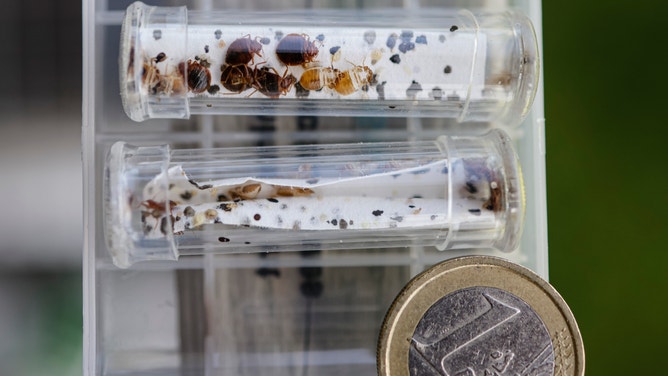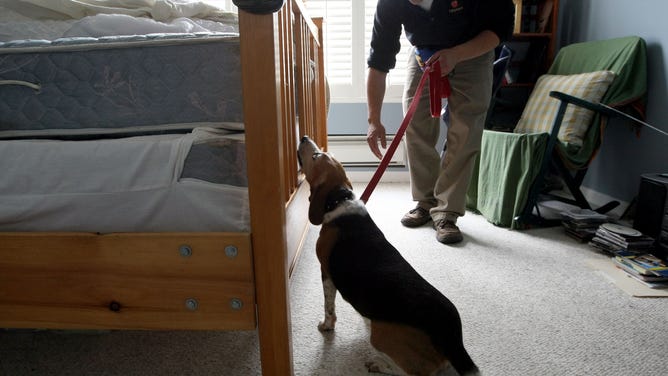America's most bed bug infested cities may surprise you
Anyone can be bitten by a bedbug. Orkin and the CDC have suggestions for spotting an infestation while at home or while traveling.
Inspect for bed bugs while traveling
Orkin Pest Management urges everyone to remember the acronym S.L.E.E,P. to avoid bed bugs in hotels and rentals and make sure they don't infest your home when you get back.
Travelers beware: Orkin just released the 2024 list of the top 50 most bed bug-infested cities in the U.S.
Chicago tops the list for the fourth year in a row. New York and Philadelphia hung on to spots No. 2 and No. 3, followed by Cleveland, Los Angeles and Detroit for a second year in a row.
Orkin, a pest control company, tallied up the number of commercial and residential bed bug treatments the company performed between Dec. 1, 2022, and Nov. 30, 2023.
Where do bed bugs live?
The bloodsuckers can live anywhere and easily travel on luggage, purses, bedding, clothes and furniture. The Centers for Disease Control states that bed bugs can travel over 100 feet in a night but tend to live within 8 feet of where people sleep. But, the parasite can live months without a blood meal.
"Although the presence of bed bugs has traditionally been seen as a problem in developing countries, it has recently been spreading rapidly in parts of the United States, Canada, the United Kingdom, and other parts of Europe," advises the Centers for Disease Control. "Bed bugs have been found in five-star hotels and resorts, and their presence is not determined by the cleanliness of the living conditions where they are found."
THE MOST RAT-INFESTED CITIES IN AMERICA

File: Bed bug feeding on human skin.
(Edwin Remsburg/VW Pics / Getty Images)
Frequent travelers most at risk
Everyone is at risk of encountering bed bugs, said the CDC. Most at risk are frequent travelers who share sleeping quarters where others previously slept.
Bed bugs solely feed on the blood of sleeping people and animals but are not known to transmit disease. You may notice obvious signs like bite marks on your body. Those may take up to two weeks to develop. Some people never develop marks.
The bugs inject an anesthetic and anticoagulant (blood clotting presenter) before noshing, so people may not realize they are being bitten.
DO YOU LIVE IN ONE OF THE MOST TERMITE-INFESTED CITIES IN THE US?

File: A Texas student shows the bites and welts she got from bed bugs in her apartment.
(Nick de la Torre/Houston Chronicle)
Other symptoms like insomnia, anxiety and skin rashes may be your first sign of an infestation.
"Bite responses can range from an absence of any physical signs of the bite to a small bite mark to a serious allergic reaction," states the CDC. "Bed bugs are not considered to be dangerous; however, an allergic reaction to several bites may need medical attention."
The bugs generally range from 1 mm, slightly larger than the thickness of a paper clip, to 7 mm, about the size of Lincoln's head on a penny, according to the CDC. They are wingless, small, flat and reddish to dark brown creatures. But they are tough to spot and can be resilient.

File: Bed bugs range in size and vary in color. Here they are compared to the size of a 1-Euro coin.
(Frank Molter/picture alliance / Getty Images)
"While bed bugs are visible to the naked eye, they are excellent at hiding. Involving a trained professional at the sight of a bed bug introduction is recommended," Orkin entomologist Ben Hottel said in a statement.
During the day, the mostly nocturnal animals hide in mattress and box spring seams, headboards, dresser tables, behind wallpaper, picture frames, electrical outlets and in clutter around the bed.
"Second-hand items such as clothing and furniture are also common bed bug hiding places, allowing pests an opportunity to hitch a ride home with new consumers," Hottel said. "Examining any new items before they enter your home will help to catch a bed bug infestation sooner, rather than later."
Inspect for bed bugs
At home, Orkin and the CDC recommend:
- Look for the exoskeletons left by molting insects.
- Check folds and under seams of mattresses and bedding. Unclutter the bedroom.
- Look for rusty-colored spots on the mattress or furniture (blood-filled fecal matter).
- Take note if you notice a sweet musty odor.
- Check all furniture before bringing it home.
- Inspect your home when you move in, after guests stay overnight and after service people have been working in your home.
WHAT CITY TOPS THE LIST FOR MOSQUITOES?

File: This beagle is trained to sniff out bed bugs.
(Justin Sullivan / Getty Images)
Traveling, Orkin recommends the acronym S.L.E.E.P.:
- Survey the hotel room for signs of an infestation. Be on the lookout for tiny, ink-colored stains on mattress seams, in soft furniture and behind headboards.
- Lift and look in bed bug hiding spots: the mattress, box spring and other furniture, as well as behind baseboards, pictures and even torn wallpaper.
- Elevate luggage away from the bed and wall. The safest places are in the bathroom or on counters.
- Examine your luggage carefully while repacking and once you return home from a trip. Always store luggage away from the bed.
- Place all dryer-safe clothing from your luggage in the dryer for at least 30-45 minutes at the highest setting after you return home.
Once in a home, hotel, cruise ship cabin, shelter, dorm, apartment, train or bus; bed bug infestation happens quickly. Females can deposit one to 5 eggs per day and up to 200 to 500 in a lifetime.
Call a pro
The CDC recommends calling an experienced professional to get rid of bedbugs with insecticide.
